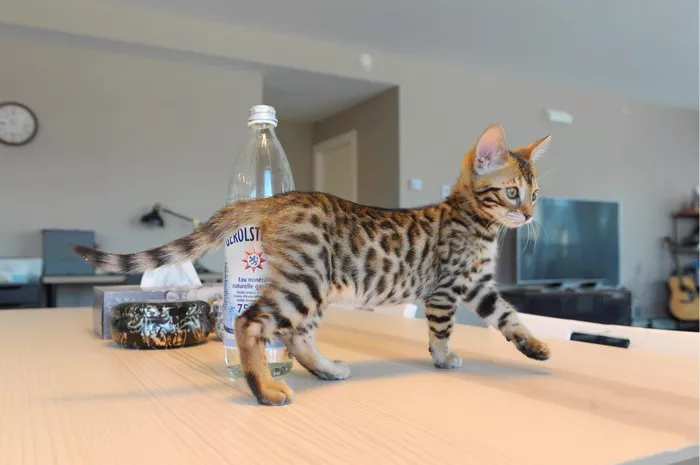Ragdoll cats, with their striking blue eyes and silky semi-longhair coats, have captured the hearts of cat enthusiasts worldwide. Beyond their captivating appearance, the question of whether Ragdolls are easy to train often arises. Known for their gentle and docile nature, these feline companions bring a unique charm to households. In this in-depth exploration, we delve into the trainability of Ragdoll cats, unraveling their distinctive characteristics, preferred learning methods, and the keys to fostering a harmonious relationship through effective training.
Understanding the Ragdoll Persona
To comprehend the trainability of Ragdoll cats, it’s imperative to first grasp their inherent traits. Ragdolls are renowned for their laid-back and easygoing demeanor. Unlike some breeds that may be more independent or aloof, Ragdolls often display a willingness to engage and interact with their human counterparts. This affable nature lays a promising foundation for training endeavors.
10 Tips to Train Ragdoll Cat
1. Establishing the Foundation:
The key to successful training with Ragdoll cats lies in early socialization. Exposing them to a variety of experiences, people, and environments during their formative weeks sets the stage for a well-adjusted and trainable companion. Ragdoll kittens, when properly socialized, tend to grow into confident and adaptable adults, making training more seamless.
Introduce your Ragdoll to various stimuli, including different surfaces, sounds, and gentle handling. Positive associations during these early encounters pave the way for a cat that is open to learning and exploring new activities.
2. Positive Reinforcement:
Ragdolls respond exceptionally well to positive reinforcement. Whether it’s treats, praise, or affectionate gestures, associating desirable behaviors with positive outcomes encourages them to repeat those actions. When embarking on training sessions, be generous with rewards to reinforce the desired behavior.
If you’re teaching commands or tricks, use treats as a reward when your Ragdoll complies. Consistency is key, and timely reinforcement ensures a clear connection between the behavior and the positive outcome.
3. Patience is a Virtue:
While Ragdolls are amenable to training, their laid-back nature means they may not exhibit the same level of enthusiasm as some other breeds. Patience becomes a valuable ally in the training process. Allow your Ragdoll to learn at their own pace, avoiding unnecessary pressure or frustration.
Breaking down training into short, manageable sessions prevents boredom and maintains your cat’s interest. A gradual approach, coupled with positive reinforcement, nurtures a cooperative attitude in Ragdolls.
4. Interactive Play:
Ragdolls have an inherent love for play, and incorporating training into interactive play sessions can be highly effective. Use toys to engage your cat in activities that mimic natural behaviors. For instance, wand toys that encourage jumping or feather toys that stimulate hunting instincts can serve as both play and training tools.
Interactive play not only enhances the bond between you and your Ragdoll but also allows for subtle incorporation of training elements, making the process enjoyable for both parties.
5. Leash Training:
While Ragdolls are generally indoor cats, leash training offers a safe way for them to explore outdoor environments. Start by introducing a harness gradually, allowing your cat to acclimate to the sensation. Use treats and positive reinforcement to create a positive association with the harness.
Once your Ragdoll is comfortable with the harness, attach the leash and let them explore a secure outdoor space under supervision. Leash training not only provides mental stimulation but also allows your cat to experience the outdoors in a controlled manner.
6. Litter Box Training:
Ragdolls typically excel in litter box training due to their natural instincts. Ensure that the litter box is easily accessible and kept clean. Use a litter type that your cat finds comfortable, and place the box in a quiet, private location.
In the rare instance of litter box issues, consider factors such as changes in the environment, health issues, or the type of litter being used. Addressing these issues promptly ensures ongoing success in litter box training.
7. Respectful Handling:
Ragdolls are known for their “floppy” nature when picked up, but not all cats enjoy being handled in the same way. Respect your Ragdoll’s preferences and sensitivities when it comes to physical interactions. Gradual desensitization and positive reinforcement can help them become more comfortable with handling.
Use treats and praise when lifting or handling your Ragdoll, reinforcing the experience as positive. This approach fosters trust and cooperation, enhancing the overall trainability of your feline companion.
8. Environmental Enrichment:
To keep Ragdolls mentally engaged, provide a stimulating environment. Puzzle feeders, scratching posts, and climbing structures cater to their playful and curious instincts. Interactive toys that dispense treats can serve as both entertainment and mental stimulation.
A mentally stimulated cat is less likely to exhibit boredom-related behaviors and is more receptive to training sessions.
9. Vocal Training:
Ragdolls are known for their soft and melodic voices. While they may not be as vocal as some other breeds, they do communicate through subtle sounds. Understanding their cues, such as purring, trilling, or chirping, enhances communication and deepens the bond.
Responding positively to vocalizations and acknowledging their attempts at communication reinforces trust and encourages further engagement.
10. Consistency is Crucial:
Consistency is a fundamental aspect of successful training with Ragdoll cats. Whether you’re teaching commands, discouraging undesirable behaviors, or reinforcing positive habits, maintaining a consistent approach fosters a clear understanding for your cat.
Consistency extends to the use of cues or commands. Whether it’s “sit,” “stay,” or any other command, using the same cues consistently helps your Ragdoll associate the words with specific actions.
Conclusion:
In conclusion, the trainability of Ragdoll cats is rooted in their affable nature and willingness to engage. Through positive reinforcement, patience, and understanding, you can embark on a journey of training that strengthens the bond between you and your Ragdoll companion. Each interaction becomes an opportunity for learning and connection, creating a harmonious relationship that enriches both your lives. By embracing the unique qualities of Ragdolls and tailoring your approach to their individual preferences, you unlock the potential for a well-trained and content feline friend.


























